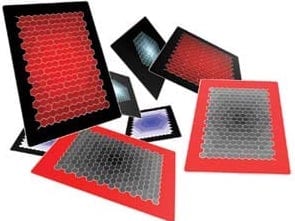 https://srinivassridhar.com/wp-content/uploads/2017/06/np03-1.bmp
233
421
Academic Web Pages Administrator
/wp-content/uploads/2020/05/clear.png
Academic Web Pages Administrator2020-06-15 13:03:492020-07-13 15:06:00Metamaterials & Nanophotonics
https://srinivassridhar.com/wp-content/uploads/2017/06/np03-1.bmp
233
421
Academic Web Pages Administrator
/wp-content/uploads/2020/05/clear.png
Academic Web Pages Administrator2020-06-15 13:03:492020-07-13 15:06:00Metamaterials & Nanophotonics https://srinivassridhar.com/wp-content/uploads/2017/06/newmaterial1400-590x393.jpg
393
590
Academic Web Pages Administrator
/wp-content/uploads/2020/05/clear.png
Academic Web Pages Administrator2020-06-15 12:57:452020-07-13 15:00:32Nanomaterials
https://srinivassridhar.com/wp-content/uploads/2017/06/newmaterial1400-590x393.jpg
393
590
Academic Web Pages Administrator
/wp-content/uploads/2020/05/clear.png
Academic Web Pages Administrator2020-06-15 12:57:452020-07-13 15:00:32Nanomaterials https://srinivassridhar.com/wp-content/uploads/2020/06/iStock_22840125_LARGE-300x201-1.jpg
201
300
Academic Web Pages Administrator
/wp-content/uploads/2020/05/clear.png
Academic Web Pages Administrator2020-06-15 12:56:142020-07-13 15:06:38Ophthalmology
https://srinivassridhar.com/wp-content/uploads/2020/06/iStock_22840125_LARGE-300x201-1.jpg
201
300
Academic Web Pages Administrator
/wp-content/uploads/2020/05/clear.png
Academic Web Pages Administrator2020-06-15 12:56:142020-07-13 15:06:38Ophthalmology https://srinivassridhar.com/wp-content/uploads/2020/05/WONDERMATERIAL.jpg
221
295
Academic Web Pages Administrator
/wp-content/uploads/2020/05/clear.png
Academic Web Pages Administrator2020-06-15 12:44:092020-07-13 15:07:05Sensors
https://srinivassridhar.com/wp-content/uploads/2020/05/WONDERMATERIAL.jpg
221
295
Academic Web Pages Administrator
/wp-content/uploads/2020/05/clear.png
Academic Web Pages Administrator2020-06-15 12:44:092020-07-13 15:07:05Sensors https://srinivassridhar.com/wp-content/uploads/2020/06/41599_2017_42_Fig1_HTML.jpg
685
657
Academic Web Pages Administrator
/wp-content/uploads/2020/05/clear.png
Academic Web Pages Administrator2020-06-15 12:42:402020-07-13 15:07:53Research Policy
https://srinivassridhar.com/wp-content/uploads/2020/06/41599_2017_42_Fig1_HTML.jpg
685
657
Academic Web Pages Administrator
/wp-content/uploads/2020/05/clear.png
Academic Web Pages Administrator2020-06-15 12:42:402020-07-13 15:07:53Research Policy https://srinivassridhar.com/wp-content/uploads/2017/06/sinai.jpg
580
500
Academic Web Pages Administrator
/wp-content/uploads/2020/05/clear.png
Academic Web Pages Administrator2020-06-15 12:34:332020-07-13 15:05:33Experimental Mathematics
https://srinivassridhar.com/wp-content/uploads/2017/06/sinai.jpg
580
500
Academic Web Pages Administrator
/wp-content/uploads/2020/05/clear.png
Academic Web Pages Administrator2020-06-15 12:34:332020-07-13 15:05:33Experimental Mathematics https://srinivassridhar.com/wp-content/uploads/2020/06/stripes.jpg
281
373
Academic Web Pages Administrator
/wp-content/uploads/2020/05/clear.png
Academic Web Pages Administrator2020-06-15 12:30:312020-07-13 15:05:07Collective Excitations
https://srinivassridhar.com/wp-content/uploads/2020/06/stripes.jpg
281
373
Academic Web Pages Administrator
/wp-content/uploads/2020/05/clear.png
Academic Web Pages Administrator2020-06-15 12:30:312020-07-13 15:05:07Collective Excitations https://srinivassridhar.com/wp-content/uploads/2020/03/bigstock-Cells-of-the-body-under-a-micr-274454272.jpg
300
300
Srinivas Sridhar
/wp-content/uploads/2020/05/clear.png
Srinivas Sridhar2020-03-28 13:29:252020-07-21 18:39:36Nanomedicine
https://srinivassridhar.com/wp-content/uploads/2020/03/bigstock-Cells-of-the-body-under-a-micr-274454272.jpg
300
300
Srinivas Sridhar
/wp-content/uploads/2020/05/clear.png
Srinivas Sridhar2020-03-28 13:29:252020-07-21 18:39:36Nanomedicine https://srinivassridhar.com/wp-content/uploads/2020/03/bigstock-Mri-Scan-Machine-244436026.jpg
300
300
Srinivas Sridhar
/wp-content/uploads/2020/05/clear.png
Srinivas Sridhar2020-02-28 13:31:102020-06-15 20:13:07MRI
https://srinivassridhar.com/wp-content/uploads/2020/03/bigstock-Mri-Scan-Machine-244436026.jpg
300
300
Srinivas Sridhar
/wp-content/uploads/2020/05/clear.png
Srinivas Sridhar2020-02-28 13:31:102020-06-15 20:13:07MRI https://srinivassridhar.com/wp-content/uploads/2020/03/bigstock-Transparent-human-head-with-a-157904882.jpg
300
300
Srinivas Sridhar
/wp-content/uploads/2020/05/clear.png
Srinivas Sridhar2020-01-18 18:46:052020-06-15 20:14:15Neurotechnology
https://srinivassridhar.com/wp-content/uploads/2020/03/bigstock-Transparent-human-head-with-a-157904882.jpg
300
300
Srinivas Sridhar
/wp-content/uploads/2020/05/clear.png
Srinivas Sridhar2020-01-18 18:46:052020-06-15 20:14:15Neurotechnology https://srinivassridhar.com/wp-content/uploads/2020/03/bigstock-Superconductivity-73891576.jpg
300
300
Srinivas Sridhar
/wp-content/uploads/2020/05/clear.png
Srinivas Sridhar2019-11-07 15:47:552020-06-15 20:12:07Superconductivity
https://srinivassridhar.com/wp-content/uploads/2020/03/bigstock-Superconductivity-73891576.jpg
300
300
Srinivas Sridhar
/wp-content/uploads/2020/05/clear.png
Srinivas Sridhar2019-11-07 15:47:552020-06-15 20:12:07Superconductivity https://srinivassridhar.com/wp-content/uploads/2017/06/book4-2.jpg
270
201
Srinivas Sridhar
/wp-content/uploads/2020/05/clear.png
Srinivas Sridhar2019-10-07 17:19:492020-06-20 12:32:42Quantum Chaos
https://srinivassridhar.com/wp-content/uploads/2017/06/book4-2.jpg
270
201
Srinivas Sridhar
/wp-content/uploads/2020/05/clear.png
Srinivas Sridhar2019-10-07 17:19:492020-06-20 12:32:42Quantum Chaos https://srinivassridhar.com/wp-content/uploads/2019/07/bigstock-Electrons-Metropolis-Piece-Of-316956940.jpg
300
300
Srinivas Sridhar
/wp-content/uploads/2020/05/clear.png
Srinivas Sridhar2019-07-07 16:07:332020-07-17 13:16:32Dielectric Materials
https://srinivassridhar.com/wp-content/uploads/2019/07/bigstock-Electrons-Metropolis-Piece-Of-316956940.jpg
300
300
Srinivas Sridhar
/wp-content/uploads/2020/05/clear.png
Srinivas Sridhar2019-07-07 16:07:332020-07-17 13:16:32Dielectric Materials https://srinivassridhar.com/wp-content/uploads/2019/06/bigstock-Red-And-Blue-Horseshoe-Magnet-329425786.jpg
300
300
Srinivas Sridhar
/wp-content/uploads/2020/05/clear.png
Srinivas Sridhar2019-06-07 16:03:592020-07-05 16:52:33Magnetic Materials
https://srinivassridhar.com/wp-content/uploads/2019/06/bigstock-Red-And-Blue-Horseshoe-Magnet-329425786.jpg
300
300
Srinivas Sridhar
/wp-content/uploads/2020/05/clear.png
Srinivas Sridhar2019-06-07 16:03:592020-07-05 16:52:33Magnetic Materials https://srinivassridhar.com/wp-content/uploads/2019/05/bigstock-Research-And-Development-Conce-359747758.jpg
300
300
Srinivas Sridhar
/wp-content/uploads/2020/05/clear.png
Srinivas Sridhar2019-05-07 16:00:082020-07-17 13:22:46Instrumentation & Measurement Techniques
https://srinivassridhar.com/wp-content/uploads/2019/05/bigstock-Research-And-Development-Conce-359747758.jpg
300
300
Srinivas Sridhar
/wp-content/uploads/2020/05/clear.png
Srinivas Sridhar2019-05-07 16:00:082020-07-17 13:22:46Instrumentation & Measurement Techniques https://srinivassridhar.com/wp-content/uploads/2017/02/ChemBio2015.jpg
384
384
Srinivas Sridhar
/wp-content/uploads/2020/05/clear.png
Srinivas Sridhar2019-04-07 15:56:072020-06-20 19:05:01Chemical & Biological Physics
https://srinivassridhar.com/wp-content/uploads/2017/02/ChemBio2015.jpg
384
384
Srinivas Sridhar
/wp-content/uploads/2020/05/clear.png
Srinivas Sridhar2019-04-07 15:56:072020-06-20 19:05:01Chemical & Biological Physics
Nanoporous alumina and titania templates for drug/gene delivery
New generations of biomedical implants and cardiovascular stents that are currently being used have the property of localized elution of drug molecules to enhance lifetime of these devices and for bio-integration. In this project Sridhar group is using nanoporous alumina and titania coatings for localized drug and gene delivery applications. They have fabricated nanoporous alumina and titania films on metal substrates with precise control on pore diameter, interpore distance and film thickness.
As a proof-of-concept for drug-loading within these films, dye-labeled polystyrene beads were filled within nanoporous alumina templates. The group is now working on in-vitro experiment to study loading and release of plasmid DNA and drug molecules from these nanoporous alumina templates.

Magnetic nanoparticles as MRI contrast enhancement agent
Magnetic nanoparticles in the form of superparamagnetic iron oxide nanoparticles are increasingly being used as contrast enhancement agent in magnetic resonance imaging (MRI). Our approach is through micelle-based nanotechnology platform. In this experiment 10 nm iron oxide nanoparticles are loaded within the hydrophobic core of PEG2000-DSPE micelles resulting in average size of 30-50 nm micelles. Tumor-specificity is then achieved via conjugation of antinuclear antibody 2C5 to hydrophilic tail of these micelles. The figure shows uptake of antibody-labeled micelles loaded with magnetic nanoparticles by human breast tumor BT20 cells. Characterization of these micellelar systems for use as contrast agents were carried out using SQUID and NMR. In addition, the group is also working on using these magnetic nanoparticles-loaded micelles for magnetic hyperthermia in cancer therapy to selectively kill tumor cells.

Localization of Wavefunctions in Disordered Billiards
Experimental observation of localized wavefunctions in disordered billiards, and deviations from the Porter-Thomas distribution due to localization in disordered billiards. These were the first experiments to be performed on disordered billiards.
We show the evolution of localization with increasing scattering by measuring wavefunctions in disordered billiards.

Scars in Sinai Billiard Eigenfunctions
We published the first direct experimental observation of scars in quantum eigenfunctions of microwave cavities. Phys. Rev. Lett. , 67, 785 (1991)


